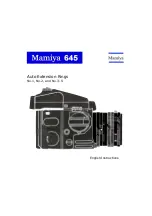
machine as it is aimed.
THROWING DIFFERENT PITCHES
Thrown balls will tend to
curve in the direction they are spinning, and the greater the spin, the
more the curve. Spin is imposed on the ball by setting one wheel to turn
faster than the other- the ball will spin & curve away from the faster
wheel. By rotating the machine on twist angle pin joint, you can set the
curve in any direction. The speed of the ball will be the average of the
wheel speed settings. For example, setting one wheel at 60 and the
other at 90 will result in a 75 mph pitch. A laminated chart is included for
guidance, but it should be considered a starting point.
The most common mistake for new users is to set both wheels to the
same speed for a fastball. If both wheels are set to the same speed, the
machine will throw a knuckleball. A fastball has backspin, so the lower
wheel must be set to a higher speed (by 20-40 mph) than the top wheel.
ACCURACY
The primary factor behind pitch accuracy is the
consistency of the balls. While you can use many types of balls (real or
dimpled / high or low seam / compressible or hard) you can not mix them
in one setup and get consistent results. They must be dry and in good
condition. Dimpled machine balls will be more accurate than leather
baseballs, especially after use. Softer balls tend to be more accurate
than harder balls because the wheels grip them better. Lower seams are
better than high seams (and cause less wheel wear). Rolling the ball into
the feeder tube so that the wheels grab across the seams is better than
along the seams (4 seam is better than 2 seam). The more consistent
the balls are, the more consistent the pitches will be.
Another key factor is the distance between wheels - see
Motor / Wheel
Position
earlier in this manual for a full discussion.
A third factor is the cleanliness of the wheels. After use, especially with
new plastic balls (both dimpled and laced), the wheels can accumulate a
residue from the balls. The residue is slick and prevents the wheel from
grabbing the ball sufficiently. The wheels can easily be cleaned with
solvent cleaners such as MEK or lacquer thinner. Cheap synthetic
leather baseballs wear quickly and leave excessive residue, so we
recommend against their use. We also recommend not using the Jugs
brand Pearl
®
baseballs. They seem to be very slick and not as accurate
as standard baseballs, at least with our machines.
If pitches seem to wander during use, check that the pin joints are all
tight. Also check that the entire machine is not moving from recoil. When
used on a hard slick flooring surface such as hardwood or cement, the
machine should be set on a carpet scrap or nonslip mat.






























